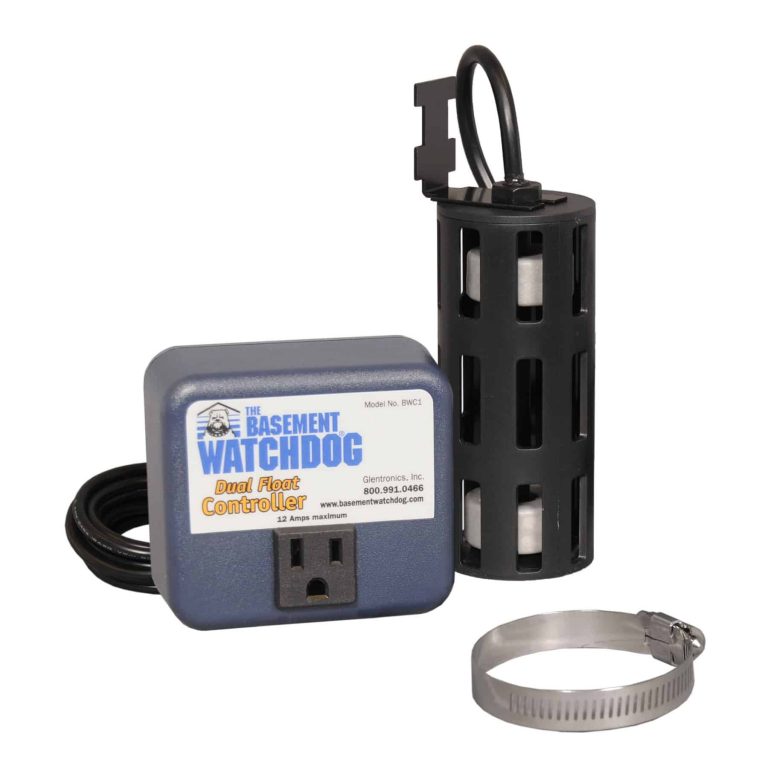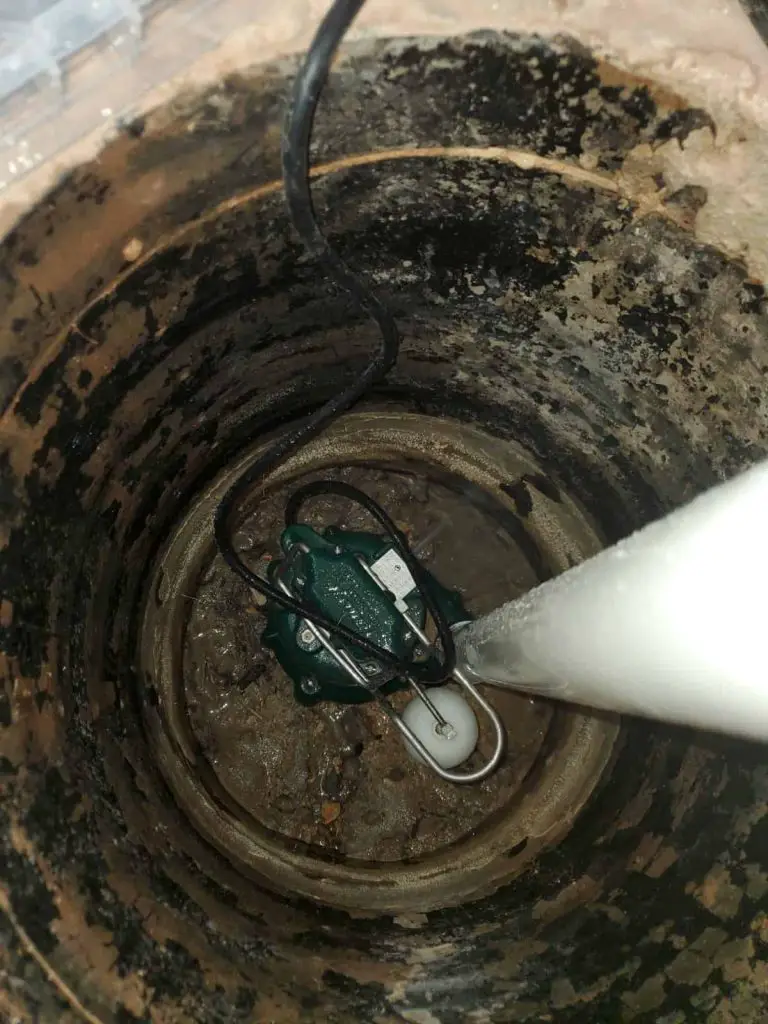Can Sump Pump Pipes Get Clogged
Pipes that lead from a sump pump can become clogged over time, especially if they are not properly maintained. Sump pump pipes are often used to drain water from basements or crawl spaces, and if they are not cleaned out regularly, they can become clogged with sediment and debris.
This can cause the pump to work harder and ultimately shorten its lifespan. If you notice that your sump pump is not working as well as it used to, it may be time to check the pipes for clogs.
If you have a sump pump, it’s important to know that the pipes can sometimes become clogged. This can happen if there is debris in the water, or if the pipes are not properly maintained. If your sump pump pipes do become clogged, it’s important to call a professional to have them cleaned out.
Cleaning A Clogged Sump Pump! Saving Money!!
How to Clean Sump Pump Discharge Line
If your home has a sump pump, it’s important to keep the discharge line clean. The discharge line is the pipe that carries water from the sump pump to an area where it can safely drain away from your home.
If this pipe becomes clogged, it can cause the sump pump to malfunction and could lead to flooding in your basement or crawl space. Here are some tips for keeping your sump pump discharge line clean: 1.
Inspect the discharge line regularly and clear away any debris that you see. This can be done with a garden hose or by using a plumbers’ snake.
2. If you notice any leaks in the discharge line, repair them immediately.
Leaks can allow soil and other debris to enter the line and clog it. 3.
Make sure that the area around the discharge pipe is free of debris and vegetation. This will help prevent blockages caused by these materials being drawn into the pipe.
4. If you live in an area where freezing temperatures are common, insulate the discharge pipe to prevent it from freezing over and becoming blocked.
Sump Pump Discharge Pipe is Overflowing
If your sump pump discharge pipe is overflowing, there are a few things you can do to fix the issue. First, check to see if the pipe is clogged.
If it is, clear the obstruction and then check to see if the water level in the sump pit is too high. If so, you’ll need to adjust the float switch so that the pump turns on sooner.
Finally, make sure that the discharge pipe isn’t frozen by checking for ice buildup. If everything looks good and the problem persists, you may need a new sump pump.
How to Hide Sump Pump Discharge Pipe
A sump pump discharge pipe is a vital part of any home’s plumbing system, but it can be unsightly. There are several ways to hide the pipe, depending on your budget and the look you want to achieve.
Paint it: This is the cheapest option, and it can be done easily with some spray paint designed for metal surfaces. However, it will need to be re-done every few years as the paint will eventually chip and fade.
Wrap it: Another low-cost option is to wrap the pipe in PVC or another type of flexible tubing. This can be secured with zip ties or duct tape, and will give the pipe a clean, finished look.
Build a box around it: If you want something more permanent, you can build a small box around the pipe using wood or PVC. This will take some time and effort, but will create a neat enclosure for the pipe.
Hide it behind plants: If you have some space in your yard, you can bury the pipe underground and then plant tall bushes or other plants in front of it. This will completely disguise the pipe while still allowing water to flow freely from it.
How to Check Sump Pump Discharge Line
Most people don’t think about their sump pump until it’s too late. But, if you take the time to check your sump pump discharge line regularly, you can avoid some serious problems down the road.
Here’s how to do it: 1. Locate your sump pump discharge line.
This is usually a white PVC pipe that runs from your sump pit to the outside of your home. 2.
Check the line for any clogs or blockages. If you see any, clear them out with a garden hose or plumbers’ snake.
3. Make sure the line is properly draining water away from your home.
If it’s not, redirect it so that water is discharged at least 10 feet away from your foundation. 4.
Check the line for cracks or holes. If you find any, repair them with PVC glue or tape.
5. Finally, inspect the outlet where the discharge pipe meets the ground.
Sump Pump Discharge Line Underground Clogged
If your sump pump discharge line is underground and clogged, you may be wondering what to do. The first thing you should do is call a plumber.
If the plumber can’t clear the line, then you may need to excavate it yourself. Here are some tips for excavating a clogged sump pump discharge line: 1.
Dig a trench around the pipe. Be sure to dig deep enough so that you can reach the pipe.
2. Use a shovel or other tool to break up the ground around the pipe.
This will make it easier to excavate the pipe. 3.
Excavate the pipe carefully so that you don’t damage it. Once you have excavated the entire pipe, you can inspect it for blockages.
4. If there are no blockages in the pipe, then you can re-bury it and hook it back up to your sump pump.
How to Fix Sump Pump Drainage
Sump pumps are an important part of keeping your home dry and free from water damage. But if your sump pump isn’t draining properly, it can cause all sorts of problems.
Here’s how to fix sump pump drainage issues so you can keep your home safe and dry. The first step is to check the discharge pipe.
This is the pipe that carries water away from the sump pit. Make sure that there are no blockages or obstructions in the pipe.
If there are, clear them out so that water can flow freely. Next, check the float switch.
This is what turns the sump pump on and off as water levels rise and fall in the pit. If the float switch is stuck in the “on” position, it will cause the pump to run constantly, which can lead to overheating and failure.
To fix a stuck float switch, simply move it back and forth until it pops loose. If your sump pump still isn’t draining properly after checking these two things, then it’s time to call in a professional. A plumber or other qualified technician will be able to diagnose and solve any remaining issues with your sump pump system.
Sump Pump Full of Water
If you have a sump pump, it’s important to check it regularly to make sure it’s working properly. One way to do this is to check the pit that the pump is sitting in.
If the pit is full of water, then your pump is probably working fine. However, if the pit is dry, then your pump may not be working correctly and you’ll need to troubleshoot the issue.
There are a few reasons why your sump pump pit might be dry. One possibility is that the float switch isn’t working correctly.
This switch turns on the pump when the water level in the pit reaches a certain point, so if it’s not working properly, the pump won’t turn on even when there’s water in the pit. Another possibility is that there’s something blocking the outlet pipe from the pit.
This could be anything from debris to an animal nest. If this is the case, you’ll need to clear away whatever is blocking the pipe so that water can flow freely again.
If you’re having trouble with your sump pump, don’t hesitate to call a plumber for help. They’ll be able to diagnose any issues and get your system up and running again in no time!

Credit: www.basementsumpandpump.co.uk
How Do You Tell If Sump Pump Discharge Pipe is Clogged?
If your sump pump discharge pipe is clogged, you’ll likely notice that your sump pump isn’t working as well as it should be. The water in your sump pit will start to back up, and you may even see water overflowing from the pit.
If this happens, it’s time to check your discharge pipe for a clog. There are a few ways to tell if your discharge pipe is clogged.
One way is to simply look at it and see if there is any debris blocking the flow of water. Another way is to feel the pipe for any blockages. If you can’t seem to find the source of the blockage, you can try using a plumbers’ snake or an auger to clear out the pipe.
Do Plumbers Know About Sump Pumps?
When it comes to plumbing, there are a lot of different components that make up the system. One of these components is the sump pump.
A sump pump is typically used in homes that have basements in order to help prevent flooding. The sump pump is installed in the lowest part of the basement and its job is to remove any water that has accumulated in the space.
Plumbers are definitely familiar with sump pumps and how they work. In fact, many plumbers will install them for their customers if they are needed. If you have any questions about whether or not you need a sump pump in your home, your local plumber will be able to advise you.
Why Isn’T My Sump Pump Draining?
If your sump pump isn’t draining, there are a few potential reasons why. First, check to make sure that the discharge pipe is not frozen.
If it is, thaw it out with warm water or a hair dryer and see if that solves the problem. If not, the next thing to check is whether the float switch is stuck in the “off” position.
This can happen if there’s debris caught in the switch or if the switch itself is defective. Finally, check to see if the impeller (the part of the pump that moves water) is clogged with debris. If it is, clean it out and see if that solves the problem.
How Much Does It Cost to Unclog a Sump Pump?
Most sump pumps are relatively inexpensive, costing around $100 to $200. However, if your sump pump is particularly clogged or damaged, it could cost up to $500 to have it repaired or replaced.
Conclusion
If you have a sump pump in your basement, you may be wondering if the pipes can become clogged. The answer is yes, they can.
Sump pump pipes can become clogged with debris, dirt, and other particles over time. If this happens, your sump pump will not be able to function properly and could cause flooding in your basement.
To prevent your sump pump pipes from becoming clogged, it is important to regularly clean them out. You can do this by using a garden hose to flush out the debris.
It is also a good idea to check the pipes regularly for any blockages or buildup. If you find any, you should remove them immediately so that they do not cause further problems.



